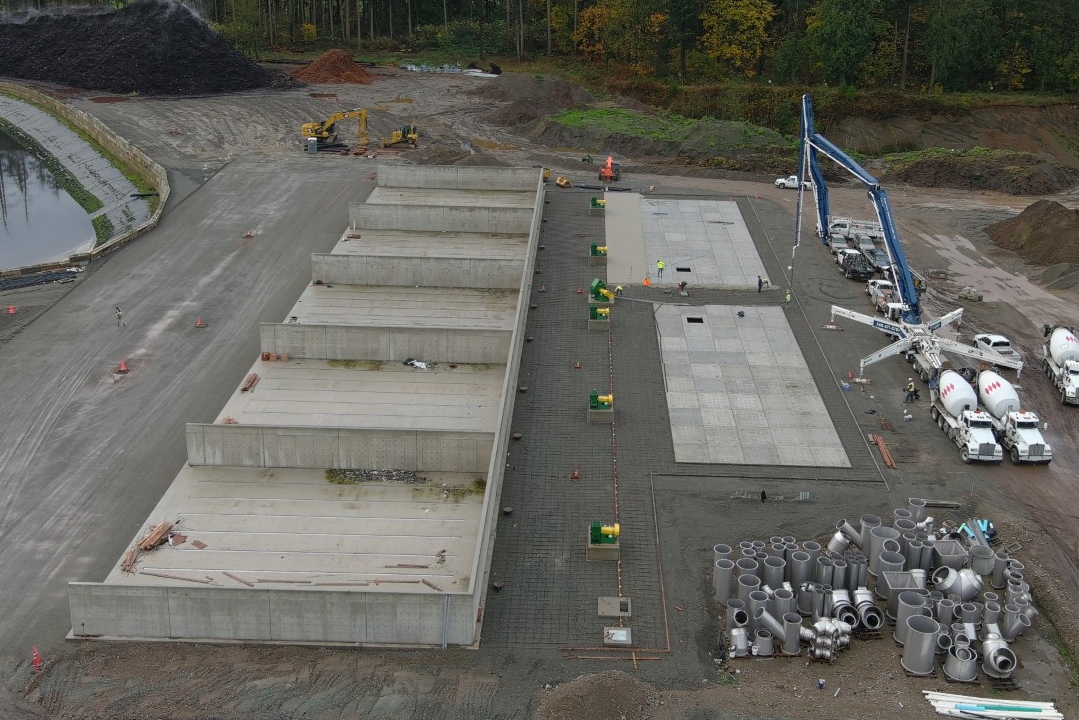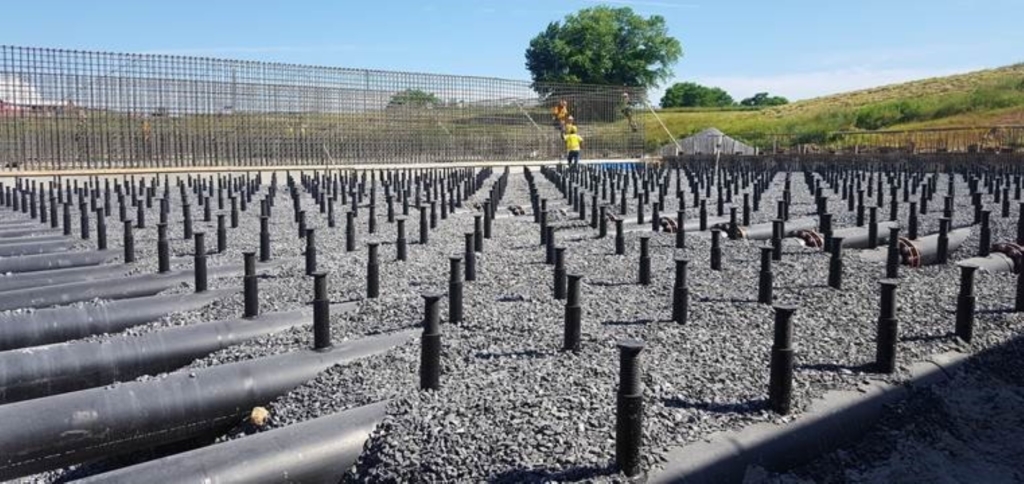We rarely find clients who have previously built commercial aerated compost facilities. This small market sector usually results in spacing out large projects geographically. Often, we find ourselves on project teams that are building their first commercial compost system. This article outlines some of the key insights we have learned for successful deployment and covers some of the major tasks in the Project Schedule.

Every project starts with design. We find that frequent, clear, cross-functional team collaboration communication lead to the best outcomes…always. The project team usually consists of:
Owner
Compost Process Engineers (ECS)
Site/Civil/Geotech Engineers
Electrical Contractor
Mechanical/Plumbing Contractor
General Contractor
Projects start with a kick-off meeting followed by design discussions aiming to optimize the process layout for the unique site and regulatory requirements. This step includes ECS finalizing the process details (duct sizing, fan selection, drainage, etc) as well as working with the civil + contractor to integrate with the site (leachate + storm water sizing, electrical services, etc).
A team-based, collaborative approach helps creative ideas rise to the surface so we can implement our systems in the most effective manner possible.
Permitting varies by location, project size, feedstocks, and many other factors. Typically compost facilities need a use permit, air and water permits, and building permits. We have seen wide variation in the time these agencies can require to issue a permit.
We recommend starting this process early, as permitting almost always takes a lot longer then anyone expects on the critical path to project completion.
ECS provides support and guidance from design through and during the construction process. We work to share the lessons we have learned building previous facilities so the contractors can work efficiently and strategically maximize quality.
After the equipment installation ECS engineers are onsite to commission and start-up the system. The first step verifies the mechanical and electrical systems are working as designed. The second step is operator training: this includes teaching the operators to use ECS equipment, software, the fundamentals of composting and operational Best Management Practices. ECS provides unlimited technical and facility (remote) support without charge during the first year of operation. As always, we want to see our operators making low odor, rapidly stabilizing compost.
A reasonably accurate project schedule helps the team plan and budget. Unfortunately, some of the critical path task durations can be challenging to estimate. The list below highlights some of the key tasks we see for most commercial compost system projects:
Permitting can require an substantial amount of time based on local agency requirements. We have seen this range from 6-24 months.
The detail design process can vary in duration, but usually can be optimized to have minimal impact on the overall schedule. This is often a 6-10 week process.
Fabrication duration depends upon both scope and current market conditions. Long lead items can commonly take up to 10-15 weeks.
ECS equipment is fabricated in the US, and domestic shipping is relatively quick. This can become more significant for international projects which require ocean transport.
Once material is on site – installation can move fairly quickly. Check out our case study pages to see different constructed facilities.
ECS provides system commissioning and along with 1 year ongoing remote support.

Commercial aerated composting continues to expand as communities adopt organic diversion goals and seek sustainable solutions. We have developed extensive experience deploying systems at commercial and municipal scale, and work to share this knowledge to help our Client’s team to build a long-term sustainable facility.
We want to learn more about your project goals. Call or email us to get started.